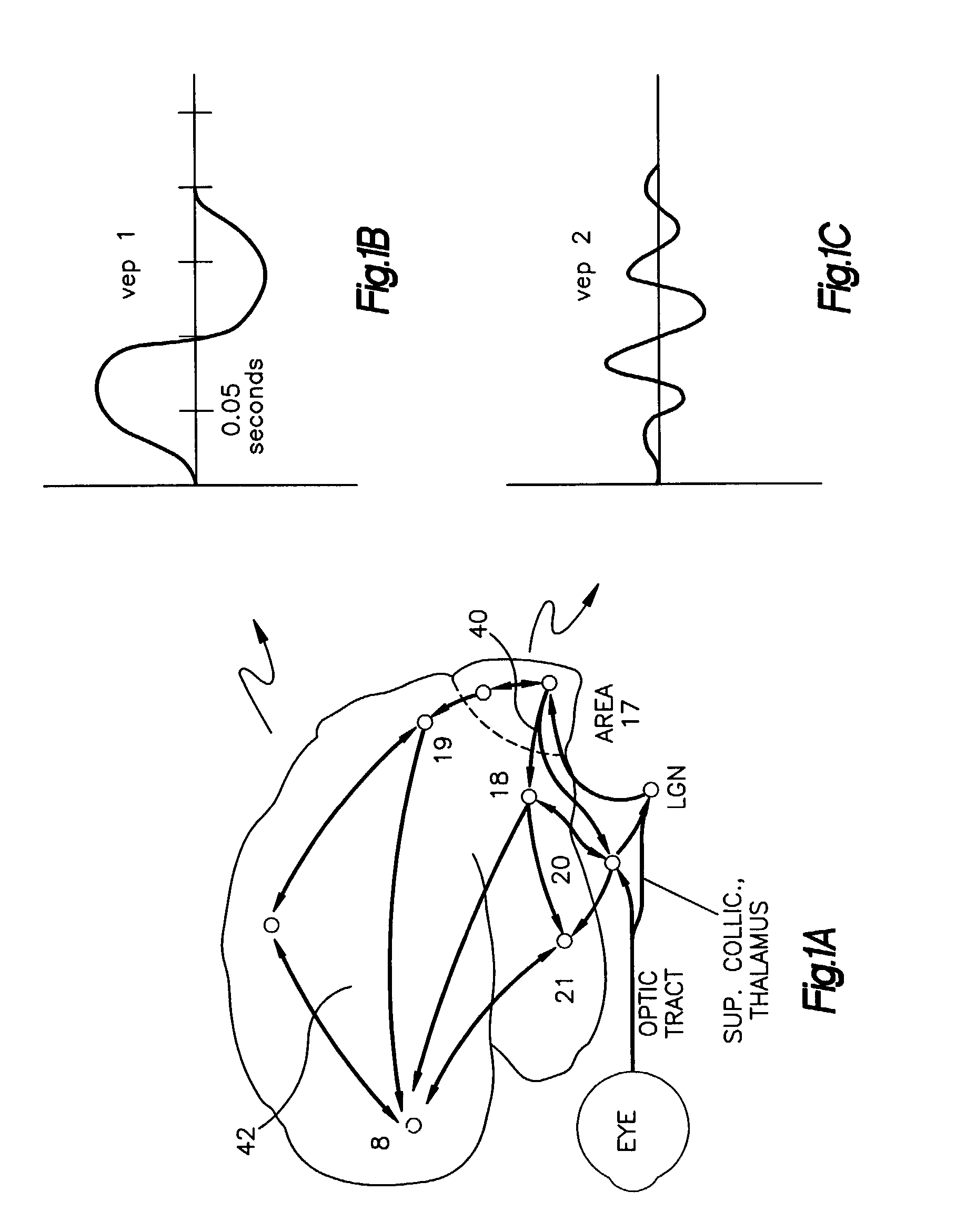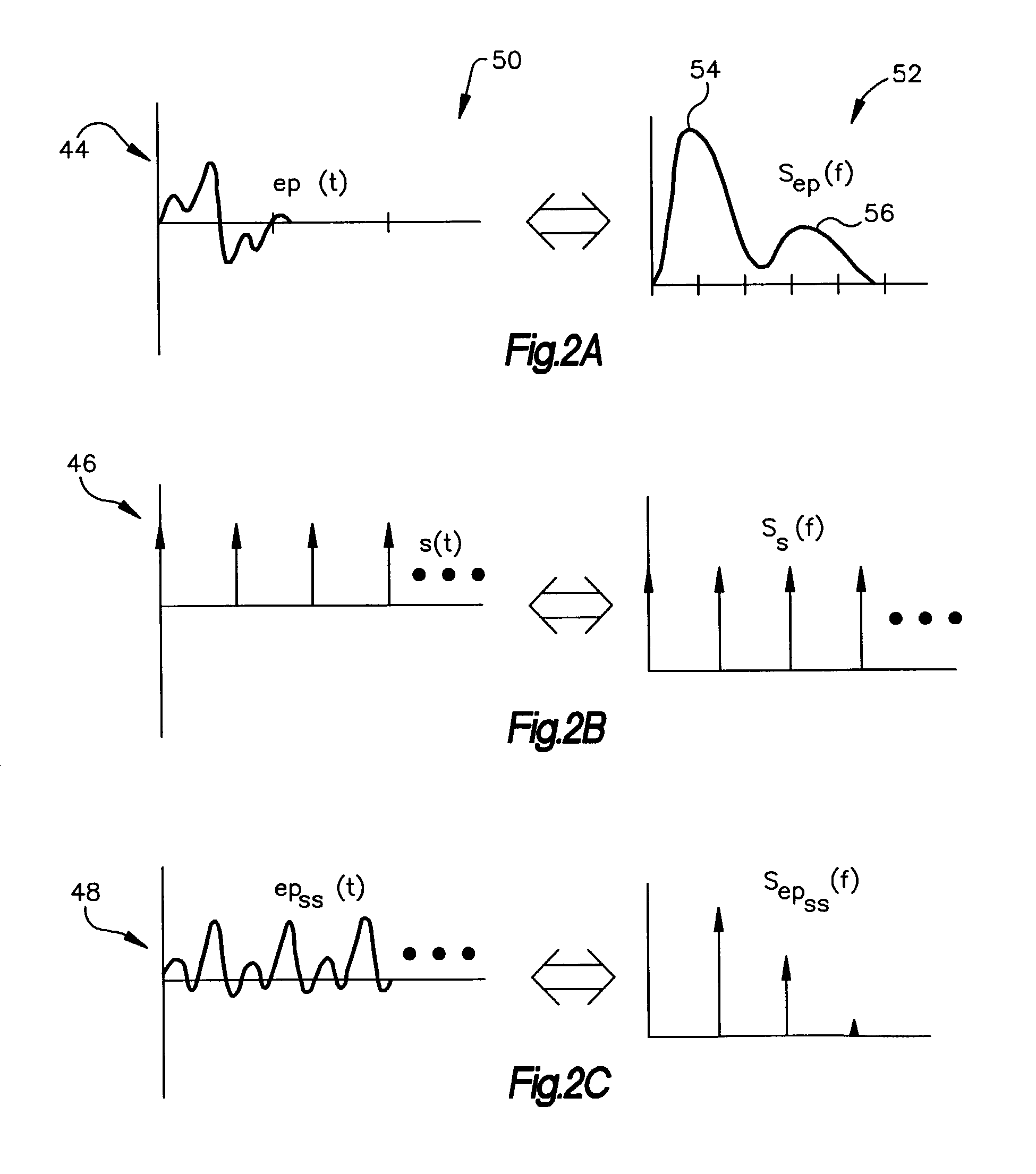Repetitive visual stimulation to EEG neurofeedback protocols
a neurofeedback and visual stimulation technology, applied in the field of repetitive visual stimulation to eeg neurofeedback protocols, can solve the problems of affecting the accuracy of the final evoked potential estimate, difficult measurement of sensory evoked potentials, and inability to provide a suitable means of studying dynamic changes in brain activity
- Summary
- Abstract
- Description
- Claims
- Application Information
AI Technical Summary
Benefits of technology
Problems solved by technology
Method used
Image
Examples
Embodiment Construction
[0031]The present invention provides a method of measuring evoked potentials in response to sensory / perceptual processes. Repetitive stimulation introduces a periodic evoked response in the EEG that can be measured and fed back in real time. The EEG response to repetitive stimulation can be described as a series of successive evoked potentials (EP), giving rise to a periodic response in the cortex, referred to as the steady-state visual evoked potential (SSVEP). The method is especially advantageous in that experimental data collected shows that short-term variations in signal amplitude are shown to be sensitive to short-term shifts in attention, and to reveal moment-to-moment changes in brain responsiveness.
[0032]FIG. 1A depicts the neuroanatomical pathways involved in the response of the human brain to a light flash. When neural activity first reaches the visual cortex 40, the early components of the visual evoked potential are produced. As activity diffuses in the cortex and reac...
PUM
 Login to View More
Login to View More Abstract
Description
Claims
Application Information
 Login to View More
Login to View More - R&D
- Intellectual Property
- Life Sciences
- Materials
- Tech Scout
- Unparalleled Data Quality
- Higher Quality Content
- 60% Fewer Hallucinations
Browse by: Latest US Patents, China's latest patents, Technical Efficacy Thesaurus, Application Domain, Technology Topic, Popular Technical Reports.
© 2025 PatSnap. All rights reserved.Legal|Privacy policy|Modern Slavery Act Transparency Statement|Sitemap|About US| Contact US: help@patsnap.com



